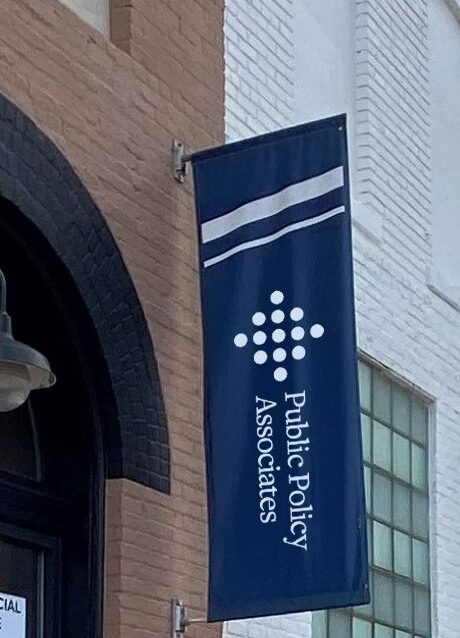Schools have always played an important role in ensuring children have access to enough of the healthy foods they need to learn and grow. When school is in session, students may eat up to three meals a day at school and two thirds of their daily nutritional needs.[1]
Sadly, food insecurity has increased in the United States since the onset of the COVID-19 pandemic, as evidenced by recent surveys.[2] According to the United States Department of Agriculture (USDA), the number of households with no stable food supply had at least doubled (and possibly tripled) with the pandemic.[3]
Social inequity means that some groups are more vulnerable to hunger than others. Households are more likely to be food insecure if they are African American or Hispanic, female-headed, or families with young children.[4] Black and Hispanic students are much more likely to attend high poverty schools[5], compared to White students (45% and 8% respectively, in 2012-13).[6]
During normal circumstances, it is a challenge to reach children with meals when school is out of session. On average, only 14.1 children receive summer lunch for every 100 students who receive school year lunch (2017-2018).[7] The challenge of reaching children with meals was intensified with emergency school closures due to the pandemic. Districts had to change their meal service models, seemingly overnight, to ensure adequate social distancing and minimize virus exposure.
In response to the emerging needs of district food services, USDA issued several waivers to allow flexibility in the meal programs. For example, the “congregate feeding” requirement was waived, allowing districts to serve meals in non-congregate settings. These federal waivers have allowed districts to innovate with their program service models,[8] such as providing “grab-and-go” meals, where families walk or drive through meal sites, or meals are delivered along bus routes or directly to student homes. Similarly, there have been innovations with meal options, including providing hot meals, meals that can be heated at home, shelf-stable meals, or bulk food or groceries in place of meals.[9]
The next big challenge for district food services is to plan for school re-opening, presumably in the fall. Schools may need to implement new service models, such as providing individually plated meals in the classroom (per guidance from the CDC)[10] or implementing multiple service models should students not be at school every day, in the event of staggered school schedules.
Even as the situation continues to evolve, there is an opportunity to learn from actions taken during the emergency school closure and in real-time over the summer months in order to plan for school reopening. An examination of meal program innovations should answer questions about effectiveness, equity, sustainability, access and reach, nutritional and health impacts, ease of initiation, stigma, and risk of virus transmission.
This real-time learning is more important than ever because there are real health and well-being implications of falling short on reaching children in need. The pandemic is exacerbating existing disparities in rates of hunger, and could extend to education outcomes and child well-being. It is urgent that citizens, organizations, and policymakers face the root causes of inequity in food access, and look more deeply at policies, practices, and approaches with a racial equity lens.
[1] Caroline G. Dunn, Ph.D., R.D., et al., “Feeding Low-Income Children during the Covid-19 Pandemic,” The New England Journal of Medicine (April 30, 2020), last accessed June 29, 2020, https://www.nejm.org/doi/full/10.1056/NEJMp2005638
[2] “Lauren Bauer, “The COVID-19 crisis has already left too many children hungry in America,” Brookings (May 6, 2020), last accessed June 29, 2020, https://www.brookings.edu/blog/up-front/2020/05/06/the-covid-19-crisis-has-already-left-too-many-children-hungry-in-america/
[3] Nicole Fisher, “Number of Food Insecure Households More Than Doubles As Food Banks Struggle,” Forbes (May 26, 2020), last accessed June 23, 2020, https://www.forbes.com/sites/nicolefisher/2020/05/26/number-of-food-insecure-households-more-than-doubles-as-food-banks-struggle/#68c786e9310b.
[4] Angela Odoms-Young and Bruce A. Marino, “Examining the Impact of Structural Racism on Food Insecurity: Implications for Addressing Racial/Ethnic Disparities.” Family & community health vol. 41 Suppl 2 (2018): S3-S6. https://www.ncbi.nlm.nih.gov/pmc/articles/PMC5823283/; Maris Feeley “Ending Hunger is a Gender Equity Issue,” Food Research & Action Center (March 30, 2017),last accessed June 23, 2020, https://frac.org/blog/ending-hunger-gender-equity-issue.; and “Hunger is a racial equity issue,” Move for Hunger (April 3, 2018), last accessed June 23, 2020, https://moveforhunger.org/hunger-racial-equity-issue.
[5] Defined as when over three-quarters of students are eligible for a free or reduced price lunch.
[6] Tom Snyder and Lauren Musu-Gillette, “Free or reduced price lunch: A proxy for poverty?”, National Center for Education Statistics (April 16, 2015), last accessed June 23, 2020, https://nces.ed.gov/blogs/nces/post/free-or-reduced-price-lunch-a-proxy-for-poverty.
[7] Clarissa Hayes, Randy Rosso, and Crystal FitzSimons, Hunger Doesn’t Take a Vacation: Summer Nutrition Status Report 2019 (Food Research & Action Center, July 2019), 16. https://frac.org/wp-content/uploads/frac-summer-nutrition-report-2019.pdf
[8] “FNS Actions to Respond to COVID-19,” Food and Nutrition Service, U.S. Department of Agriculture (June 26, 2020), last accessed June 29, 2020, https://www.fns.usda.gov/disaster/pandemic/covid-19/
[9] “Impact of Covid-19 on School Nutrition Programs: Part 2,” School Nutrition Association (May 2020), last accessed June 29, 2020, https://schoolnutrition.org/uploadedFiles/11COVID-19/3_Webinar_Series_and_Other_Resources/COVID-19-Impact-on-School-Nutriction-Programs-Part2.pdf
[10] “Considerations for Schools,” Centers for Disease Control and Prevention (May 19, 2020), last accessed June 29, 2020, https://www.cdc.gov/coronavirus/2019-ncov/community/schools-childcare/schools.html

